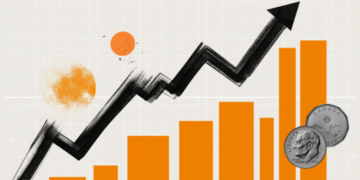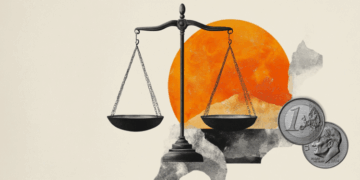- EUR/USD eased slightly on Wednesday, slipping back below 1.0900.
- EU data remains functionally non-impactful as US data weighs.
- US CPI inflation eased more than expected in February, building hopes for PPI figures.
EUR/USD bidders eased off the gas pedal on Wednesday, allowing Fiber to retreat around one-third of one percent and pushed bids back below the 1.0900 major price handle. Despite a significant recovery in EUR/USD over the last couple of weeks, buyers are settling back down after readjusting Fiber by over 5% in less than two weeks.
European economic data is barely registering on the needle this week as trade war concerns and US inflation data rule the roost. On Wednesday, the US implemented a worldwide 25% tariff on all steel and aluminum imports, marking a significant escalation in President Donald Trump’s aim to simultaneously initiate a trade war with all of the nation’s allies.
In February, US Consumer Price Index (CPI) inflation fell more sharply than expected, with headline CPI at 0.2% month-over-month and 2.8% year-over-year, slightly quicker than predictions. While this remains above the Federal Reserve’s (Fed) 2% target, it has raised hopes for rate adjustments. The CME’s FedWatch Tool now indicates better than even odds for a Fed rate cut in June, up from July.
Nearly four years have passed since US headline inflation hit “transitory” levels. Aside from a brief slowdown in Q3 2024, key inflation metrics have remained steady since June 2023, when the post-Covid inflation rate eased to 3% annually.
Despite cooler CPI readings in February, there are signs of potential challenges for policymakers: gasoline and fuel oil prices fell by 3.1% and 5.1%, but natural gas prices surged by 6%. Additionally, shelter price inflation rose by 4.2% year-over-year, while a small 0.3% decrease in vehicle prices masked a 2.6% rise in food price inflation compared to last year.
EUR/USD price forecast
EUR/USD looks set to end its recent bull run, closing lower and slipping back below 1.0900 just as quickly as it jumped the major handle in the first place. However, Fiber has climbed nearly 7.6% bottom-to-top from the last major swing low near 1.0175, with bulls easily snapping the 200-day Exponential Moving Average (EMA) in the process.
EUR/USD is now running aground of technical resistance from the 1.0900 handle, a technical region that flummoxed Euro bulls the last time around back in October and November of last year.
EUR/USD daily chart
Euro FAQs
The Euro is the currency for the 19 European Union countries that belong to the Eurozone. It is the second most heavily traded currency in the world behind the US Dollar. In 2022, it accounted for 31% of all foreign exchange transactions, with an average daily turnover of over $2.2 trillion a day. EUR/USD is the most heavily traded currency pair in the world, accounting for an estimated 30% off all transactions, followed by EUR/JPY (4%), EUR/GBP (3%) and EUR/AUD (2%).
The European Central Bank (ECB) in Frankfurt, Germany, is the reserve bank for the Eurozone. The ECB sets interest rates and manages monetary policy. The ECB’s primary mandate is to maintain price stability, which means either controlling inflation or stimulating growth. Its primary tool is the raising or lowering of interest rates. Relatively high interest rates – or the expectation of higher rates – will usually benefit the Euro and vice versa. The ECB Governing Council makes monetary policy decisions at meetings held eight times a year. Decisions are made by heads of the Eurozone national banks and six permanent members, including the President of the ECB, Christine Lagarde.
Eurozone inflation data, measured by the Harmonized Index of Consumer Prices (HICP), is an important econometric for the Euro. If inflation rises more than expected, especially if above the ECB’s 2% target, it obliges the ECB to raise interest rates to bring it back under control. Relatively high interest rates compared to its counterparts will usually benefit the Euro, as it makes the region more attractive as a place for global investors to park their money.
Data releases gauge the health of the economy and can impact on the Euro. Indicators such as GDP, Manufacturing and Services PMIs, employment, and consumer sentiment surveys can all influence the direction of the single currency. A strong economy is good for the Euro. Not only does it attract more foreign investment but it may encourage the ECB to put up interest rates, which will directly strengthen the Euro. Otherwise, if economic data is weak, the Euro is likely to fall. Economic data for the four largest economies in the euro area (Germany, France, Italy and Spain) are especially significant, as they account for 75% of the Eurozone’s economy.
Another significant data release for the Euro is the Trade Balance. This indicator measures the difference between what a country earns from its exports and what it spends on imports over a given period. If a country produces highly sought after exports then its currency will gain in value purely from the extra demand created from foreign buyers seeking to purchase these goods. Therefore, a positive net Trade Balance strengthens a currency and vice versa for a negative balance.
Read the full article here








